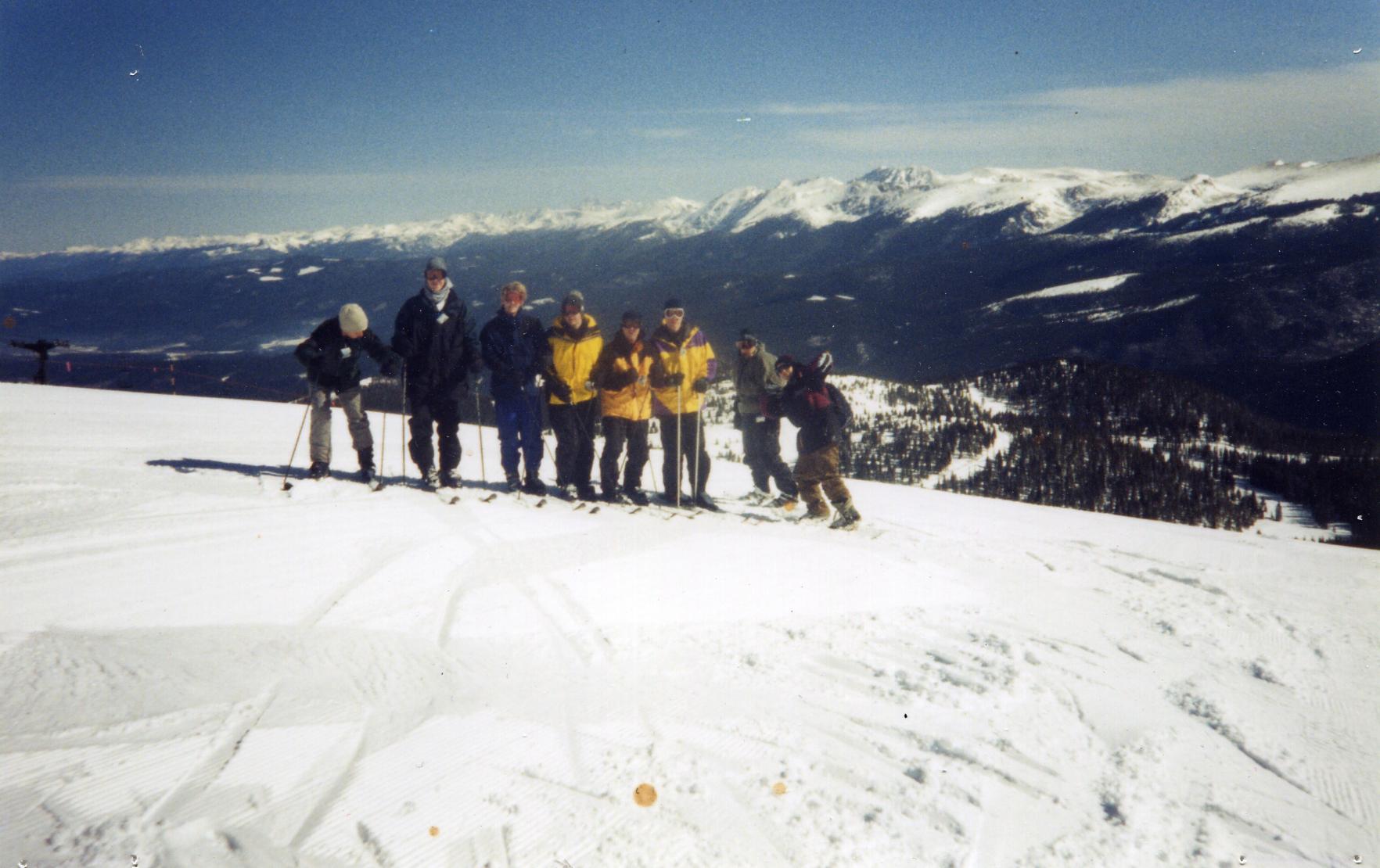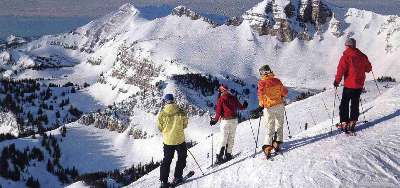 |
Skiing
|
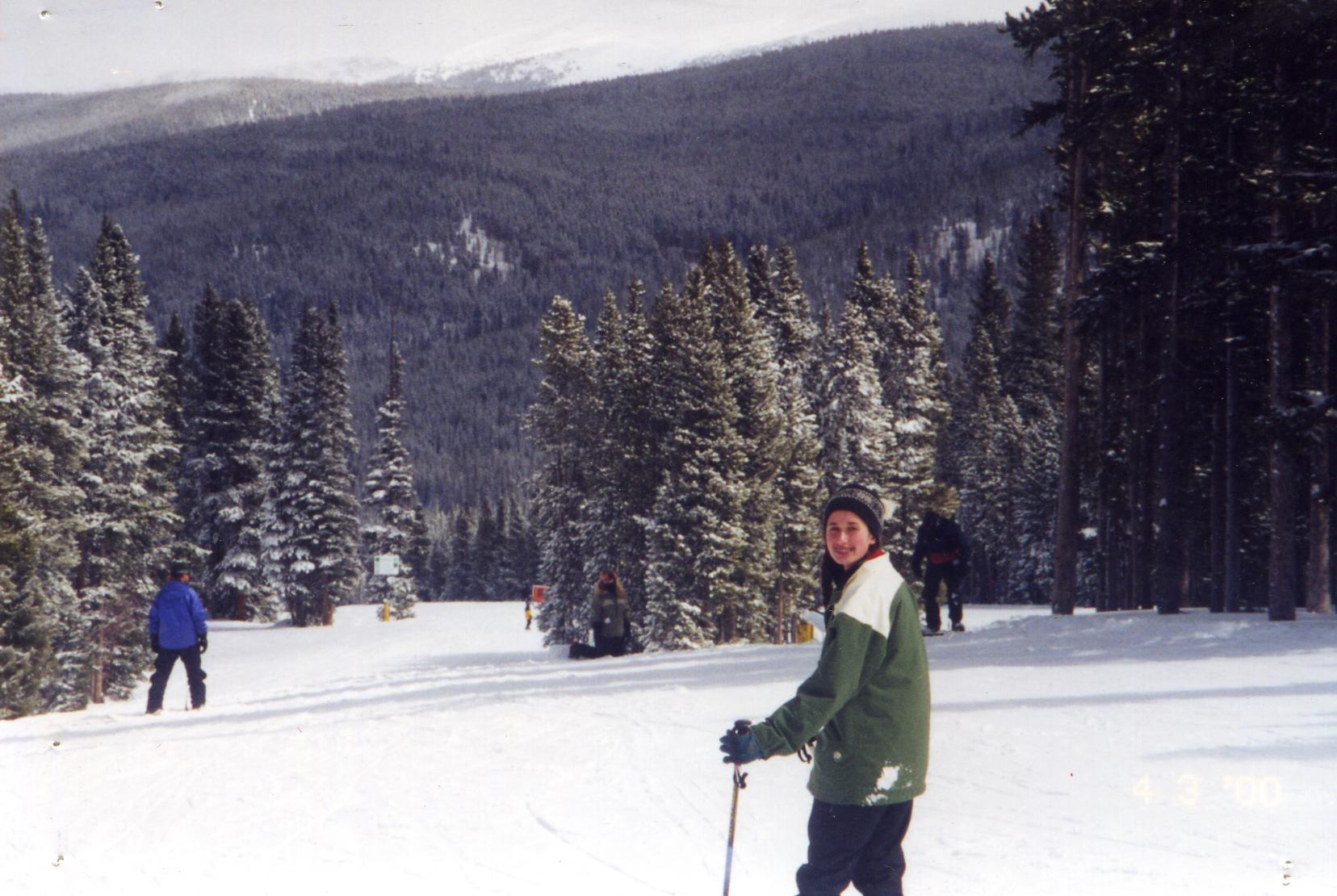 |
It's true Kentucky and the Ohio Valley are a long way from the historic ski resorts of New England or the Rocky Mountains. However, thanks to the miracle of snowmaking machines, a dozen outstanding ski facilities have been developed over the last several decades, and interstate highways put them in easy reach of the region's population. So schools, Scouts, church groups, families and local ski clubs can spend three months skiing locally, then take one or two major trips over Christmas and/or Spring Break. We now have equipment dealers like Phillip Galls and Nat's and the resorts even advertise on TV and radio. Sometimes this is a mixed blessing. Since schools hold students all week and the ski season extends only through December, January and February, weekends can be jammed. The three day weekends of Martin Luther King and Presidents Days are especially overwhelming. So anyone who can break away for midweek skiing can obtain much lower rates, obtain lodging much more easily, and find lift lines nonexistent. |
|
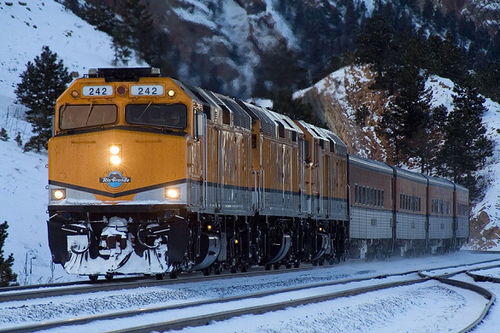 |
Within reach of a Friday night drive are 12 facilities, enough for a fine season. We are nine hours from Boyne, Michigan, certainly the best skiing complex between Vermont and Colorado, so we can squeeze a four day trip there over Thanksgiving or Christmas break or on a long weekend later in the Winter. And we're well positioned for the annual Spring Ski Break. We are an easy two day drive straight out I-64 to Winterpark or anywhere else in Colorado. Or we can hop on Amtrak and step off at the Winterpark Lodge or the station at nearby Frazier, or fly to Denver and board the Ski Train, which makes daily runs between that city and Winterpark, unloading right at the base of the slopes. We can also ride Amtrak's famous Empire Builder out to Whitefish, and ski on the flanks of Glacier National Park. |
A few of our better located resorts, such as Snowshoe, Timberline, Wisp and Seven Springs, extend their seasons into March and in some years even reach April before shutting down. And Snowshoe sometimes manages to open before Thanksgiving. But our best skiing comes in a six week window between January 1 and Presidents Day. That's when our night time temperatures are coldest and we get frequent natural snows to supplement the snow machine output. The Geography of ski slopes is interesting. Every single one of our ski resorts faces due North. As much as possible, they design their trails facing North. Where exceptions have to be made, as when trails wind around mountains or come through South, Southeast or Southwest facing ravines, the trails are usually the last to open in December and the first to lose snow late in February. And the location of these resorts is an incredible triumph of geographic planning. Lexington and Cincinnati can be basking in unseasonal warmth and sunshine, and several hours away Snowshoe and Winterplace will be receiving eight inches of snow. Even down in Charleston, W.Va., residents can be preparing their gardens for early planting but the road into the Canaan Valley will be ice covered and slow going. |
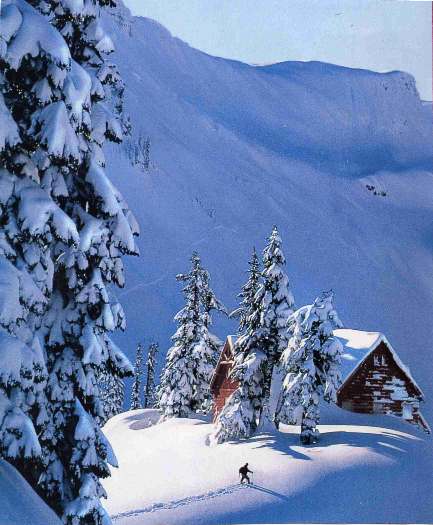 |
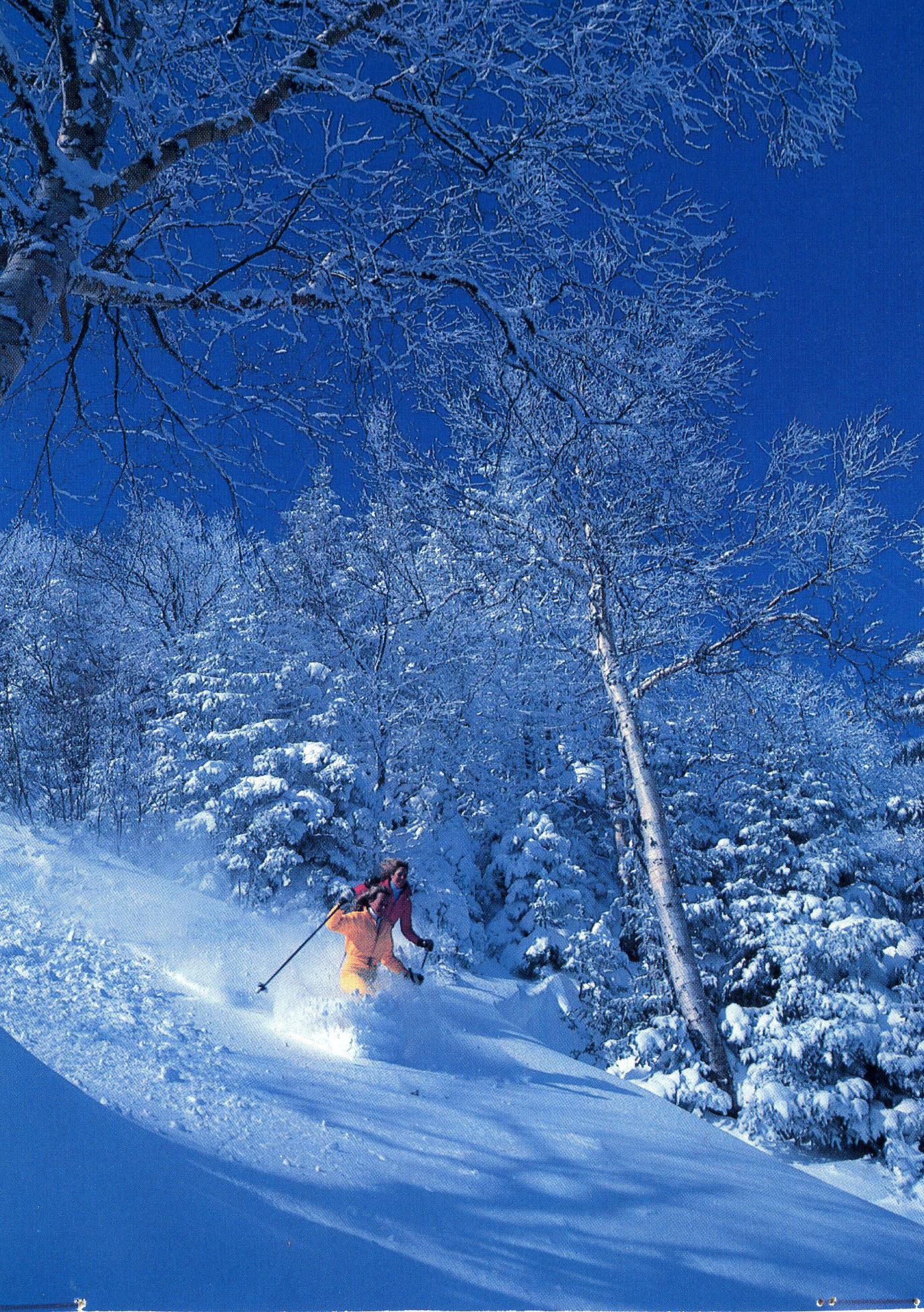 |
Our Rocky Mountain and New England buddies suggest that we have a serious conditioning problem. They claim 30-40 days of skiing are needed to build and maintain the necessary muscles, especially in the legs and abs. In an ideal year, we can ski 14-20 days. However, we have found that roller blading, bicycling and good gym workouts can indeed build and maintain those muscles. Hundreds of the Skiiers Edge and Total Gym conditioning machines sit in Kentucky and Ohio Valley basements where they are used from September on to build and tone those muscles. As a result, we don't see anyone incurring any injuries beyond the usual sore muscles that can be revived by a night of Ben Gay or Icy Hot. And when we hit the major resorts, especially Winterpark with its hourlong trails leading from Vasquez Cirque all the way back to the Zephyr Lodge, we don't notice ourselves skiing any slower or arriving at the bottom any more exhausted than anyone else. We have developed a few idiosyncracies concerning equipment. We are not convinced of the value of ski goggles. They're expensive. We find that a good pair of wraparound sunglasses, especially Oakleys, work just as well and can be used for all our warm weather activities as well. We like hiking sticks better than ski poles, because they have more features, and they save another $100. We think Thorlo backpacking socks are warmer than skiing socks. We think silk long underwear is warmer than various special weaves. |
Financing a ski season is a challenge. It is the most expensive sport a child can take up. And there is an elitist mentality among many ski resort managers. They are not initially interested in special price breaks because they feel they can fill the beds, rent the equipment, and sell the lift tickets to adults paying full fare. However, our whole philosophy is based on making these activities accessible, meaning affordable, to the average kid. So we've learned a few things over the years. If a phone clerk won't give us a student, Scout, youth or family package, we just ask for a manager, and if we need to, we'll go up the ladder. We have a very powerful argument. You can easily obtain the statistics that ski resorts are seeing a steady drop in customers; were it not for snow boarders the resorts would be in real trouble. The baby boomer skiiers are now in their fifties and sixties and skiing has not attracted nearly enough young people. We are the solution to this problem. We are developing skiiers who will be their prime customers for the next 40 years. We usually find someone willing to cut us a deal. Thanks to the recent recession, we find them much more receptive than they were previously. We like skiing at as many different resorts as we can fit into our schedule each season, but if you prefer one local resort, season tickets are a tremendous price saver. |
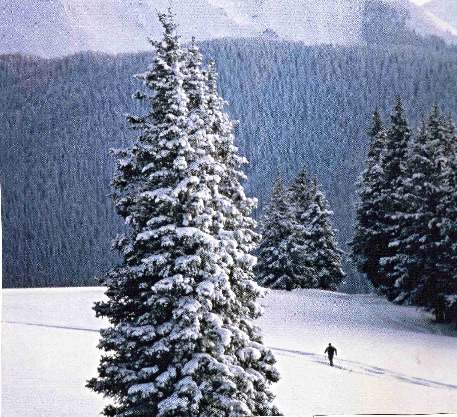 |
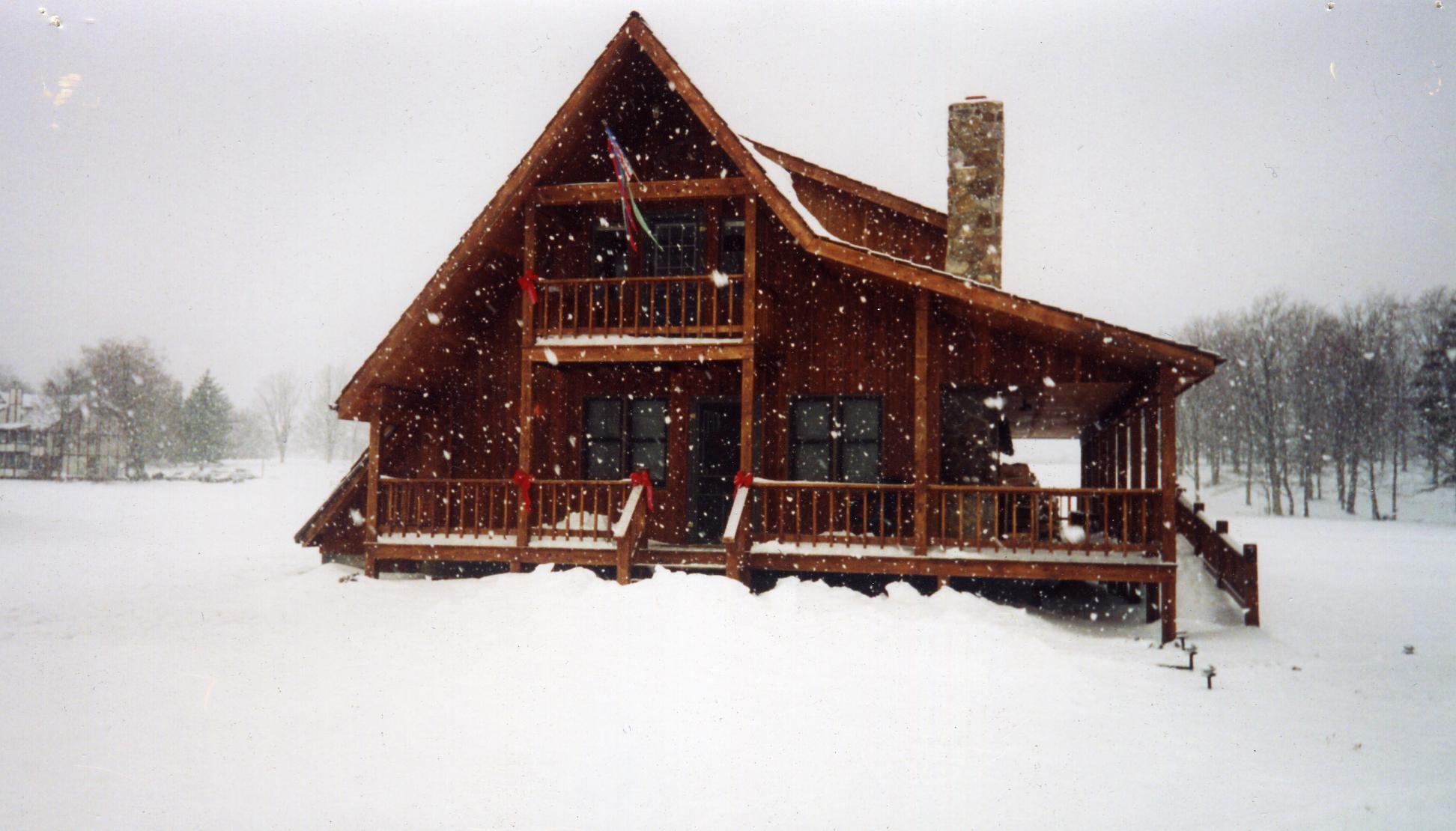 |
We skip the days immediately before and after Christmas and New Years and the Martin Luther King and Presidents Day weekends. We make reservations in September. At the more expensive resorts we take advantage of "shoulder season" rates, that is, early and late season. Lodging is the major cost of a ski trip. Staying at Snowshoe's Spruce Lodge, Winterplace's Mountain House, and the hostels right at the base of the slopes at Timberline and Seven Springs, cuts those costs considerably. At Winterpark, the humorously named Worst Western Lodge saves a fortune. If you're renting a van for each trip, finalize your schedule by October, go to one rental agency, and negotiate a season package. Rent your equipment by the season, not week by week at the various resorts. Lexington has Phillip Galls, but there are ski rental outlets everywhere. If you buy equipment, wait for end of season sales. Avoid ski lessons. Assign one of your experienced skiiers to each new member for the first several trips. As a parent, teach your own kids, or have older kids teach their younger siblings. |
Comment or
Question ?? Join us at The
Forum. |
Read our day to day adventures at the Blog |
Or contact us at trekkerforrest@aol.com |
